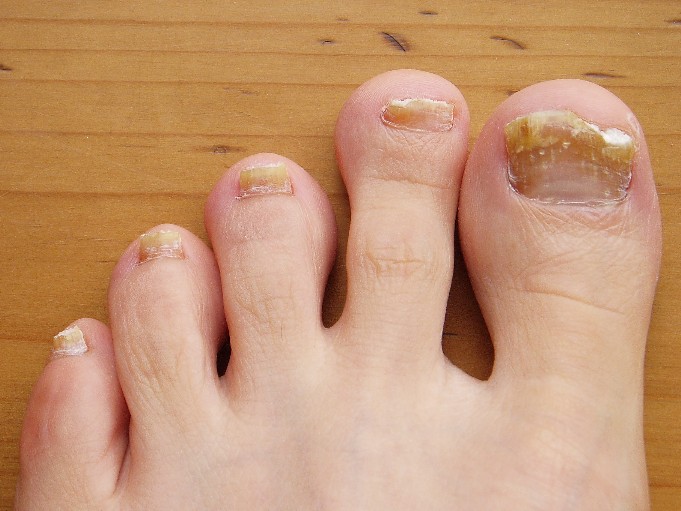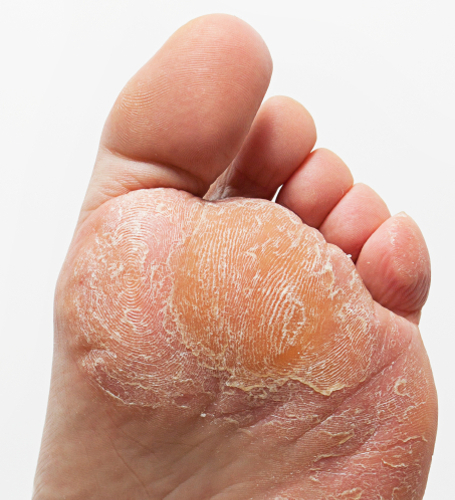Athlete's foot
Chilblains
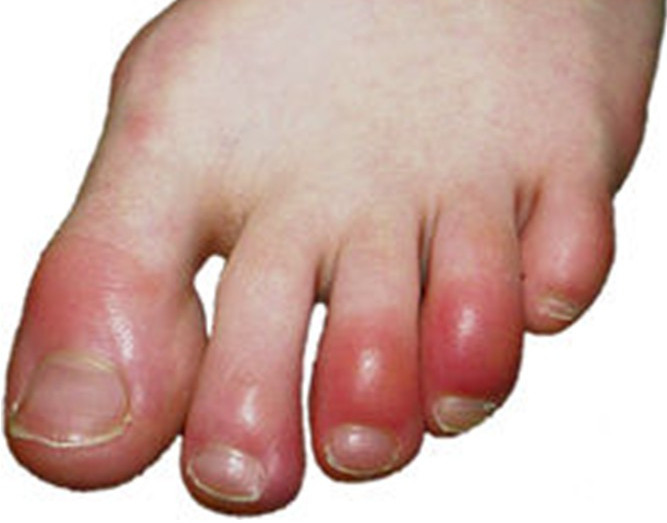
What are Chilblains?
Chilblains are small red, hot, itchy swellings that usually appear on the skin of the fingers and toes.
What causes Chilblains?
Chilblains develop as a result of the skins abnormal reaction to the cold. In cold and damp weather, if the skin is cooled down and then rapidly heated, a chilblain may develop, for example if feet or hands have been warmed by a fire or radiator.
Anyone can develop chilblains, though some people are more susceptible than others:
- Those with a poor circulation such as the elderly
- Young adults who work outdoors
- People who wear tights or thin socks and shoes in cold weather
- People with conditions such as Raynauld's phenomenon and anaemia
- Women are more prone than men
Signs and Symptoms
- Red, itchy, burning, painful swelling of the skin
- The tips of toes or fingers, nose, earlobes and areas of high pressure such as bunions and clawed toes can be affected
- The chilblain can swell, becoming a dark blue colour before drying out and cracking
- Cracking of the skin can increase the risk of infection and ulceration, particularly if the circulation is poor
Corns
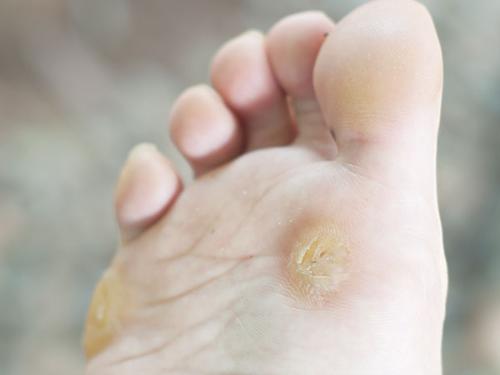
What are Corns?
Corns are the most common skin problem for your feet and appear as small concentrated areas of hard skin. There are two main types of corns, hard & soft.
Hard Corns are a plug of hard skin usually found on the tops of the toes and underneath toes nails.
Soft Corns develop in a similar way to hard corns but are whitish and rubbery in texture. They appear between toes where the skin is moist from sweat or when insufficient drying occurs. Although the skin can be dried out with the daily application of surgical spirit, the corn will need to be removed by our Podiatrists. Vascular and Neurovascular Corns can be extremely painful and must be treated by a specialist. They usually occur through trying to remove a hard corn by yourself. The skin becomes damaged allowing blood vessels and nerve endings to push through to the corn.
Always see a specialist
If you have a corn you must consult your Chiropodist for advice and to arrange the removal of a corn. They will be able to prescribe protective pads and/or orthosis to relieve painful corns.
If you are elderly or have diabetes you must not use corn plasters or other products as they can burn healthy skin tissue around the corn.
Cracked heels
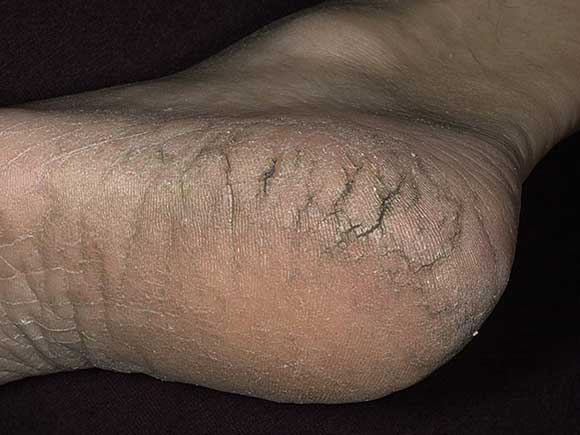
What are cracked heels?
The skin around the heel area of the feet can become excessively dry causing it to crack and fissure.
What causes cracked heels?
The skin around the heel is naturally thicker than other areas of the foot and so requires more moisture to keep it supple. If the skin becomes too dry and lacking in moisture, the upper layers start to lose their flexibility causing the skin to split and crack.
Anyone can develop cracked heels though certain factors can make some people more prone to the condition:
- Increasing age - skin naturally loses moisture as it ages
- Being overweight
- Wearing shoes with open backs that expose the heels
- Skin conditions such as psoriasis and eczema
- Diabetes can cause dry skin
- Athlete's foot causes drying of the skin and can affect the heels
- Shoes that are too loose or tight around the heel can shear and rub the skin
Signs and Symptoms
- Dry, peeling, flaking skin developing around one or both heels
- Vertical cracks known as fissures. The pressure placed on the heels when walking can cause fissures to split open and bleed. They can become very painful and susceptible to infection
- Hard skin can develop around the heels and the edges of the fissures preventing the skin from 'knitting' together and healing
Fungal Nail Infection
What is fungal nail infection?
Fungal nail infections are also known as onychomycosis. It is usually a painless condition when the fungus infects the toenail causing it to become discoloured and unsightly. It can also affect the finger nails, though is less common.
What causes fungal nail infection?
The fungus that causes nail infections can be found on floors and in socks and clothing. It can be spread from person to person by contact with these objects and is highly contagious. The fungus can enter the nail and nail bed if the nail has become damaged or broken.
Signs and Symptoms
- Discolouration of the nail (dense white to yellow to brown)
- Thickening and distortion of the nail
- Crumbling, splitting or pitting of the nail
- A soft layer of debris under the nail
- Unpleasant odour
- Lifting of the nail away from the nail bed
- Spreading of fungus to the skin causing itching, peeling or burning skin, known as Athlete's Foot
Sweaty Feet
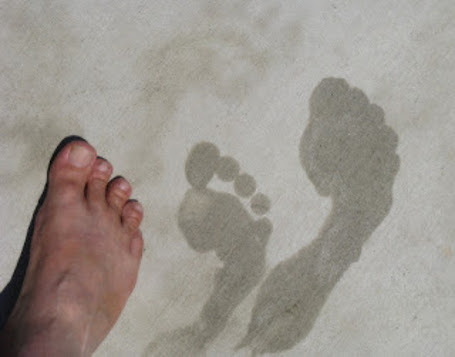
What are sweaty feet?
Sweaty feet is a common condition occurring when feet sweat excessively and inappropriately, sometimes causing an unpleasant odour. The medical term for this is Hyperhidrosis.
What causes sweaty feet?
It is a natural process for the body to sweat. The body is covered with over 5 million sweat glands and the foot contains 250,000 sweat glands alone. Each sweat gland secretes moisture and salts onto the surface of the skin to cool it down. This explains why we sweat more during hot weather and exercise.
Sometimes the sweat glands of the feet are overactive and produce more sweat than is necessary to cool the feet at that time, this is known as excessive sweating. It may occur simply in response to feelings of anxiety or stress or as part of a medical condition such as diabetes, hyperthyroidism, menopause or obesity. These medical conditions are likely to produce excessive sweating in other areas of the body as well as the feet.
Signs and Symptoms
- Moist and wet feet
- Continually damp or wet socks
- Excess moisture on the feet creates a breeding ground for bacteria and fungi which break down to give off an unpleasant odour
- Excessive fungi can cause peeling and sogginess between the toes, Fungi can also spread to the nails
- Excessive bacteria can colonise the skin leading to conditions such as pitted keratolysis where the skin has a pitted, punched out appearance
- Soft corns may develop between the toes
- Ingrown toenails are more likely to develop in sweaty feet, especially in teenagers
- An inability to wear loose sandals and a tendency to slip on tiled or polished floors
- Other areas of the body may be affected - most commonly are the hands, armpits, hands and scalp
- Embarrassment and distress
Verrucas
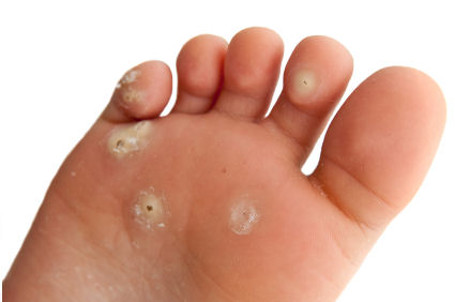
What are verrucas?
Verrucas start as a small speckled lesion and can grow quite rapidly. They have a rough surface, often covered by hard skin and may vary in size. They may also spread to other areas of the foot. Although anyone can get them, verrucas mainly affect children and young adults.
What causes verrucas?
A Verruca is a viral infection of the foot. Injuries and cuts to the foot can also increase the risk of infection. Although verrucas are often confused with corn or callus, they are usually more painful when pinched and may appear anywhere on the foot.
Preventing verrucas
To help prevent verrucas, wash feet daily and dry thoroughly. Take extra care in communal changing areas. Hosiery should be washed at 60˚C to avoid cross-infection.
Verrucas have been known to disappear with the help of the body's natural immunity. However, if they are growing in size, spreading or becoming painful, treatment will be necessary. Please consult your Chiropodist for advice on the best treatment for you.
Treatment
A number of treatments are available. Applying adhesive plasters, lotions and ointments are widely available, which often contain strong acids or natural oils to kill the virus, or a freezing method called cryotherapy.
Cryo-treatment is a technique used for the treatment of verrucae using Nitrous Oxide to freeze the verruca site to –60 degrees Celsius. The verruca site is cleansed and pared in the usual way. Two thirty second freezes are applied, with a two minute gap between each application, and the area is again cleaned and a dressing applied.
Please be aware that there are certain medical conditions where Cryo-treatment is not recommended. These are as follows: Diabetes Mellitus, Peripheral Vascular Disease, or any impairment of the circulation.
All treatments aim to kill the virus by destroying the affected cells. There is no guarantee they may not reoccur but to reduce the risks, take care of your feet.
Calluses
What are calluses?
A callus is a small area of hard skin, caused by pressure or friction. A callus can appear anywhere on the foot where the skin rubs against the bone, shoes or the ground. Most calluses are a symptom of an underlying problem such as bone deformity, a particular style of walking or ill-fitting footwear. By seeking advice from our HPC Registered Podiatrist these factors can be improved or cured.
Toenail Problems
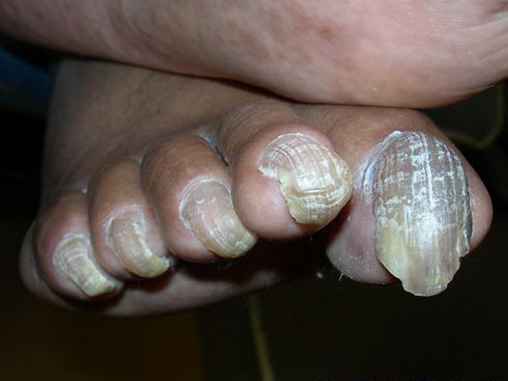
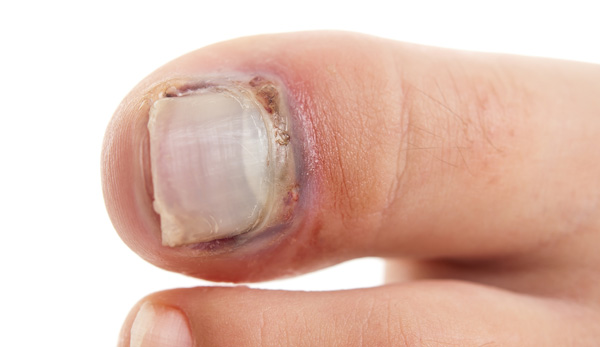
What are toenails?
Toenails are there to protect the skin lying beneath them. Unfortunately from time to time the toenail can be damaged.
Toenail problem causes
The most common cause of injury to toenails is cutting nails too short or down at the sides. Other causes could be direct injury, a particular style of walking or poor foot, toe or nail structure. Ill-fitting footwear or hosiery will aggravate any problems.
Common complaints
The most common example of damaged toenails are ingrown toenails. These are caused by a splinter of the nail piercing the side of the toe and digging into the flesh. The toe may then weep or bleed, becoming red, shiny, swollen and infected.
Preventing toenail problems
Keep your feet clean by washing daily and drying thoroughly. Always wear clean hosiery and properly fitting shoes that allow the feet to breathe. Cut toenails straight across, but not too short, with proper nail clippers. If you are unsure or unable to cut your own toenails, please seek help from your Chiropodist
Advice if problems occur
- Bathing the foot in warm salty water will help prevent infection and reduce inflammation
- On no account cut the nail
- Put on a clean dressing over the toe
- Avoid enclosing the toes in shoes and wear sandals instead








